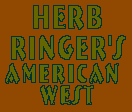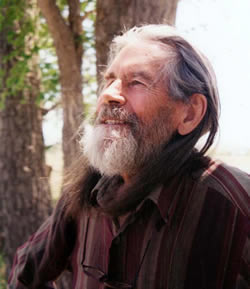 |
||||||
|
|
That word and its equivalents go way back, to the eighteenth and nineteenth century England and throughout the British Empire. The key word for Nature appreciation was sublime. In the nineteenth century Americans, probably influenced by English forbears, discovered Nature, a place to visit to escape city life and its "artificiality." Cities, a system built by us, had nothing to do with esthetic thrills and spiritual refreshment that one gained when going into wild country. That fragile separation is valid, but not by any means the entire truth. I am not discounting the long saga of "going wild," seeing the wonders, enduring adventures, observing the grand diversity of plants and animals, but we might try to understand to some extent the lives of the great majority of Americans, farmers and workers, who in these chaotic times are intimately involved in nature’s workings in urban and country locales---the good and the bad. For many it is a life-and-death struggle. The idea that Nature is "pristine" is not true. Neither is sublime. Those terms reek of contrivance. Neither fits the true existing world. The universe, the unknown forces behind the spectacle, proceed on their own courses, and what we humans contributed has been until recently a very minor part of that spectacle. In the last few hundred years, our impact on Earth systems became gigantic and it grows more critical, day by day. Further, as we know by now, many of the acts of Nature, whether triggered by us or not, are devastating to our species. The majority of the world’s peoples know that in their very bones: diseases, dangerous animals, toxic plants, droughts, floods, tornados, tsunamis, earthquakes, volcanic eruptions, storms at sea, and dangerous work on oil platforms, building sites, chemical works, fabricating factories, power lines--places where things can go wrong and do go wrong. All of this is part of Nature because we are one species among many built by evolution, blessed and damned by our amazing intelligence. But we can’t get outside of this unpredictable universe. Pristine is a term used by Bill Meadows, Director of the Wilderness Society, by Brooke Williams of the Great West Institute and by countless other devotees and protectors of wilderness. It has been used lavishly in successful battles to keep oil and gas drilling out of the Alaskan National Wildlife Refuge, but victories like that tend to be temporary--certain special places have to be defended again and again. A recent example is the roadless rule established by Bill Clinton, once more under attack. This newest encroachment has been beaten back, but there is a serious flaw in the victory: Tongass, the largest National Forest, is exempted from the roadless rule. Loggers will be moving in, cutting big trees. Why do we pursue this battle cry that wild country is pristine? Because it has easy appeal; the idea of spiritual refreshment and esthetic views in an Edenic and mythic paradise are embedded in our collective conscience. Again, why? Because we visualize our current civilization as bad, but we are stuck with it, so we persist. We escape for short runs in off-road contrivances, climb, hike, camp, feel free and easy and in tune with Nature. If we run into troubles--mosquitoes, blackflies, rain, cold, thirst...that is part of the balance of nature, part of the adventure, away from the evils of civilization where we labor and feel depressed and un-free. These are realities, but they are not set in stone; they are simply "the way things are." "So now in our West, artists are trying to run their eyes clear of mythic and legendary cobwebs, and see . . .straight to the beating meaningful heart of things.." Willim Kittredge, chapter heading from Stewart l. Udall, The Forgotten Founders, Island Press, 2002.
Speaking from my own experience, the exhilaration of being out of doors on foot and fancy free is a great pleasure that I couldn’t live without. I am not dissing wild country ventures, though I sometimes feel sad when I consider what motorized vehicle drivers and mountain bikers are missing. The crucial fact in all of this is that it doesn’t get down to root causations, where "varnmental" tactics have to penetrate to create real change. Behind this collective conscience lies another layer of causation, the Industrial/Military Complex whose intrusion into conservation efforts is astounding. I’ll take you on a tour of one of those Big Green outfits, The Wilderness Society. As Stiles notes in his cover story, the current governing board members include: Caroline Getty, an heir to the Getty fortune; Doug Walker, chairman of the board of REI; Hansjorg Wyss, whose estimated worth is 8.7 billion; Scott Nathan, managing director of a Boston-based investment firm; Brenda Davis, one of the vice presidents of Johnson and Johnson; David Bonderman who has multiple connections in the zillionaire world; Marcia Kunstel, who owns one of the most beautifully-sited dude ranches in Teton county, Wyoming, formerly owned by an heiress known locally as The Countess. Now, shift scenes to 1935. Consider Bob Marshall, from a fairly wealthy family, a foot traveler par excellence, veteran of arctic exploration, on staff of the Bureau of Indian Affairs where he had initiated wilderness set-asides. He later moved to the Forest Service as chief of recreation and lands. Bob had a vision. He met with ecologist Aldo Leopold, author of Sand County Almanac and other writings; Robert Sterling Yard, publicist for the National Park Service; Benton MacKaye, "Father of the Appalachian Trail"; Ernest Oberholtzer, fighter for forests and waterways in Minnesota and Ontario, canoe traveler to arctic regions, who had created cordial relations with Indian peoples throughout those vast wild areas; Harvey Broome from Tennesssee, defender of wild lands in the south; Benard Frank, lawyer, and Harold C. Anderson, both wilderness combatants. They worked out the aims of a new organization, The Wilderness Society. Its goal would be, and still is, the rescue of wilderness areas on public lands--National Parks, National Forests, Bureau of Land Management lands, Wildlife Refuges. Bob supplied most of the funds for the modest office in Washington, D.C., the salaries of the Executive Director and Editor of The Living Wilderness, and per diem expenses. Next scene change, 1947, the STS ranch in Jackson Hole, Wyoming on the banks of the Snake river. Bob Marshall had died; his brother George stepped in as Wilderness benefactor. Here are the Council members from that summer: Benton MacKaye, from Massachusetts, who owned one black, threadbare suit for formal occasions; Howard Zahniser, literateur, performance poet and the exec and editor who held down the office in D.C; Olaus Murie, one of the field biologists for the Bureau of Biological Survey; Bernie Frank, a lawyer from the Seattle area; Ernest Oberholtzer and Harvey Broome. The Council’s business meetings were held on a bright sunshine circle in a clearing in a grassy sage area. Mardy Murie and my sister Joanne fed everybody from the homestead cabin’s kitchen. After two or three days of business matters, the Council went off on their annual visit to a public lands wild place. Relations with Park Service and Forest Service were cordial in those days, the forties, a period of progress in the wilderness scene. Those days are long gone. We now have violations of law by our government, wars and unemployment, business failures and climate change, but the elite rich weasels continue their ruthless privatization and disneyfication of everything. Yes, everything. For a meticulous following, day-by-day, of these processes see Scott Silver’s web site: www.wildwilderness.com. Do wars and economic disasters and climate change have anything to do with wilderness preservation? Yes, absolutely, because it is all one huge shebang, rapidly running out of control. Refusing to list polar bears as endangered is directly connected with the insane urge to grab every drop of oil on the planet, even in Arctic seas where polar bears try to adapt to ice melt and tundra softening, and these events are directly related to the military establishment whose use of oil is the largest fraction of our share of that dwindling, and precious, resource. That’s one example. Consider this claim from the Xerces Society’’s magazine, Wings. "For the urban dweller it is the orange and black flash of a monarch, rather than a tiger or jaguar; the call of the katydid instead of the howl of coyotes, that provide our most intense moments for remembering that even our biggest metropolises are part of something greater." Introduction: Insects and the City, by Sasha Spector. "... part of something greater," that’s a hard truth. I argued once with Howard Zahnhiser about working to save all lands, wild or notthin the borders of the United States. He, in his soft-spoken way, corrected me. His position was that the Wilderness Society’s focus had to be on public lands. Other organizations would take care of the rest. Well, Nature Conservancy has done good work in buying private land and turning it over to public caretakers, but buying land takes money, huge chunks of money. Nature Conservancy has no alternative, it’s part of the market economy, embedded in the places where money is found. That means going along to get along. Unfortunately, as with the Cloudrock development in Utah and the huge development in the center of California’s Condor country, the builders of havens for rich folks seem to go unchallenged by environmental outfits. Why is this? Let’s recognize that money rules, and its rules are rigid. Money can buy tame policies, such as keeping up the drumbeat for pristine places where a small minority of humans can visit, continuing the imaginary division between built places--cities and throughways et al.--and escape places. That does not upset the apple cart too much. Rich moguls can give generously, and even govern environmental organizations, feeling they are doing their part to save nature, just as they green their corporations with superficial changes that do not cut too far into profits. Corporations crow in public now, about that magic formula: that "business as usual" and "going green" can get along nicely. That’s what keeps us from lifting a finger to actually slow our use of energy, slow climate change and the mad lifestyle we’re all trying to adapt to. We try to believe in our own blind trust in the way things are, but are we firm believers? I doubt it. Henry David Thoreau wrote an essay, Walking. Walking, a human-paced activity, motion in the world allowing close observation and enjoyment. However, on Ktaadn in Maine he felt more impressed than usual by Nature’s total indifference, almost hostility. My friend and colleague , Charlotte Meyers, suggests that Thoreau might have felt there were places on the planet, the "extreme wild," that we might explore, but let us not stay. I think Ed Abbey had similar thoughts. He went so far as to suggest that wilderness might be best left alone: we know it’s there, but it exists for itself and the creatures who are best adapted to lifetimes there. I once felt that this was an extreme suggestion, making wilderness off-limits, requiring border guards. I’ve had second thoughts. The way things are going now, outdoor recreation in wild or semi-wild country, is an artificial collection of predetermined goals promoted by the amenities economy---the planning of adventure by someone in a corporation’s office cubicle. How do you "plan" an adventure? Can’t be done. There is no better way to lose contact with "the wild" than this pernicious, money-driven treatment of human creatures as nothing but consumers of planned adventure, aka wreckreation. Let’s keep firmly in mind that walking is not jogging; It consists of sitting and standing and moseying along. Can’t we be walkers, each of us at our own pace, without preconditions, paying attention to what is actually there? Here’s a revolutionary thought: abandon the know-it-all arrogance of the typical varmentalist, substitute an awareness that includes a finely honed ability to pay attention to the other creatures who are, as we are, full partisans in and of Nature. That alertness can extend to those of our own species, especially those who don’t agree with us. I’ll venture to say that a minimal requirement for the future well-equipped varmentalist has to be the fine art of listening. Noticing nature can be about the starry night, the universe, but it is also about small matters such as the whiff of perfumes wafting across sage and taking in the taste of spruce along the way. We have been in southern Ohio for a few days. I am amazed at the diversity of butterfly species. I can’t identify any of them and don’t need to. Must be at least ten different kinds fluttering around this yard and in the woods. On a walk along the gravel road I waded through a storm of butterflies. I also have chigger bites, reminding me that this is not the Garden of Eden. There is nothing at all glamorous about chigger bites, just as there is nothing as hazardous as confronting a big brown bear on the north slope of Alaska or a mountain lion in California. Is there another way of doing varmental/conservation business without teaming up with zillionaires ? You will have noticed a lot of earnest blather in outdoor writing about being part of nature. I wish we really meant it, deeply in our hearts and minds. That would be a base, a start along a different path that leads away from business as usual and the art of the politically possible... a turning our backs on "the way things are," where money rules. It would be a brushy path, hard to see very far ahead, but our feet would guide us. We might trust those feet. Along that path are ways of creating justice for all of our species and forward to full democracy, inside our movements as well as throughout our society. Then we can get together and work out dramatic, romantic (sure, why not?) and truly effective ways to begin to save the Earth. A turn like that can be a hard road. Can we do it? No one knows. I hear the bell tolling. Do you hear it? Note: I borrow the varmentalist term from Tom Lynch, professor of English and a varmentalist at University of Nebraska, Lincoln. |
|||||







 Pristine
Pristine